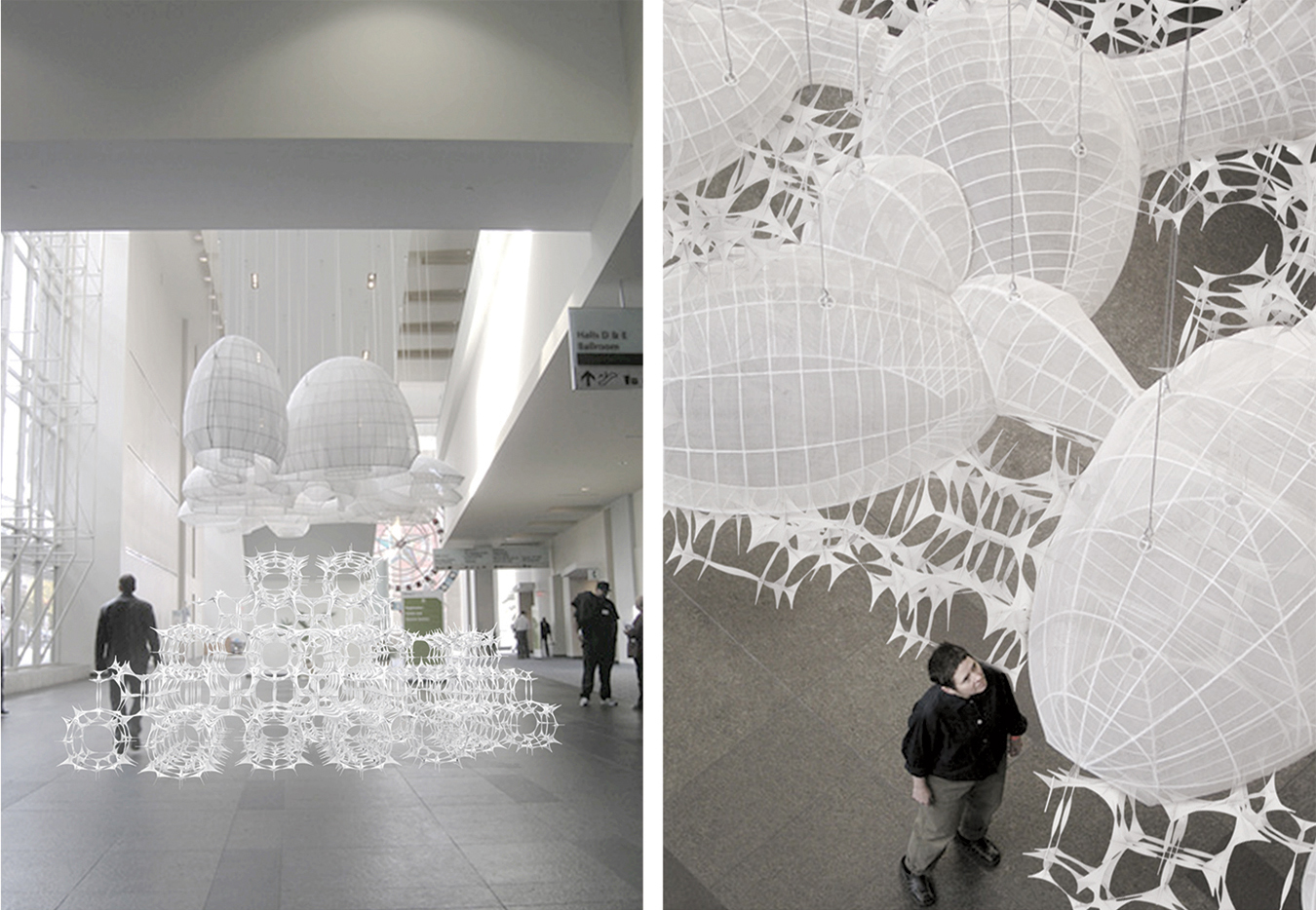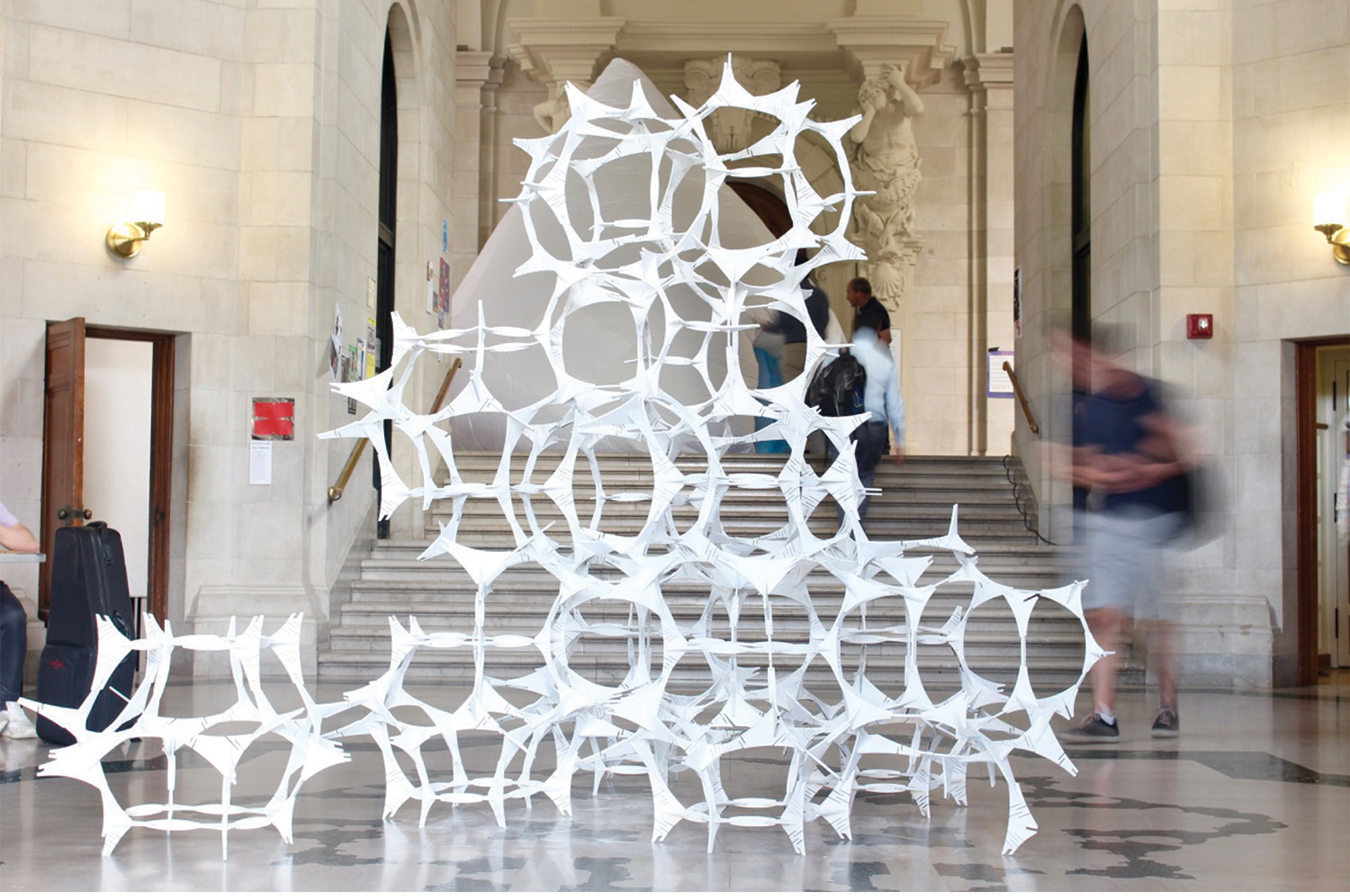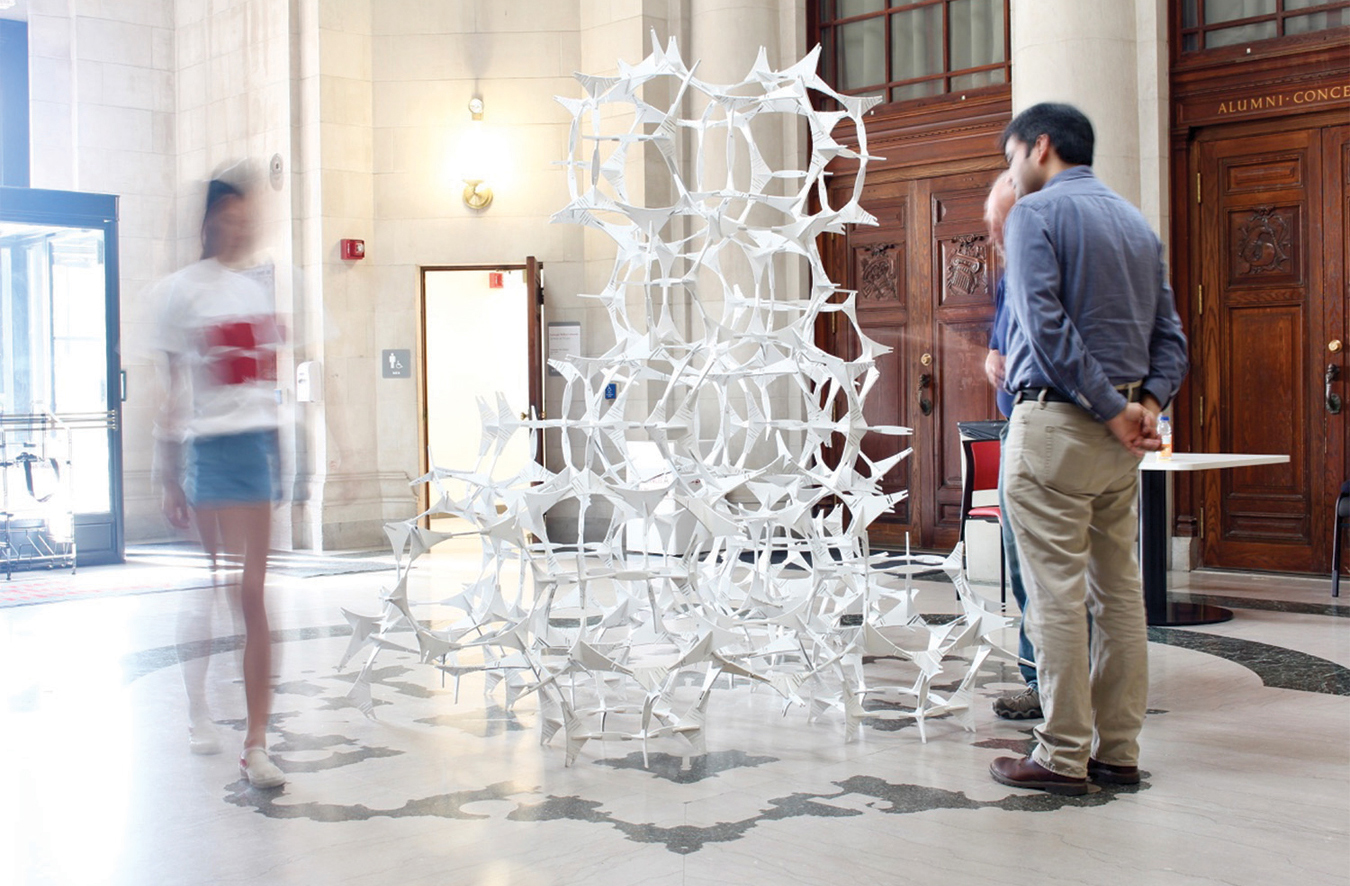Daniel Cardoso Llach, Jingyang Liu, Yi-Chin Lee: Algotecton
Artist(s):
Title:
- Algotecton
Exhibition:
Creation Year:
- 2019
Medium:
- Pre-fabricated CNC-cut wood laminates assembled manually on site.
Size:
- 22ft x 9ft x 14ft
Category:
Artist Statement:
“Algotecton” (from “algorithm” and “tecton” — carpentry, articulation) is a site-specific generative sculpture inspired by the Wearie-Phelan structure, a mathematical construct that approximates the geometry of foam. “Algotecton” harnesses state-of-the-art computational design-fabrication techniques to give material expression to mathematical concepts, invite discovery, and playfully transform people’s perception of space and form.
Extended Summary:
Algotecton I (from ‘algorithm’, and ‘tecton’ — carpentry, articulation) is a site-specific generative sculpture inspired by the Wearie-Phelan structure, a mathematical construct that approximates the geometry of foam. It comprises sixteen interlocking polyhedra fabricated using advanced parametric modeling and CNC technologies. Evocative of different natural formations — a crystalline structure, a kelp forest, a molecular compound — the sculpture responds to Kendall Buster’s Parabiosis II piece at the Washington Convention Center street level. Algotecton I harnesses state of the art computational design and fabrication techniques to give material expression to mathematical concepts, invite discovery, and playfully transform people’s perception of space and form. Algotecton I extends a tradition of mathematical and design research with roots in early studies in morphology, crystallography, and molecular modeling. In D’Arcy Thompson’s pioneering exploration of form in the natural world, for example, morphology is understood as the expression of dynamic processes involving multiple intertwined biophysical forces which can be represented mathematically.
The modeling of such structures has been the subject of mathematical and geometric investigations for centuries, playing a role in scientific understandings of the world at the atomic, molecular, and architectural scales. With this broader context as a background, we draw inspiration from the Wearie-Phelan structure, a mathematical construct that approximates the geometry of foam bubbles discovered by Denis Wearie and Robert Phelan, two physicists working at Trinity College, Dublin, in 1993. Using computer simulations, Wearie and Phelan discovered that by minimizing the surface between the different polyhedra this structure could fill space more efficiently than previously thought possible, thus modeling a more ideal ‘foam.’ The structure comprises two kinds of cells of equal volume: an irregular pentagonal dodecahedron and a tetrakaidekahedron, along with two hexagons and 12 pentagons. Wearie-Phelan is just the starting point of an investigation into computational aesthetics and tectonics. Algotecton I is based on a system of parametrically-defined modular, interlocking, and flexible components that is capable of creating solid structures without the need for any fasteners, nails, or glue, and is sustained exclusively through friction.
This extends our previous studies of modular mono-material mechanical assemblies, and speaks to a tradition of architectural and artistic investigations into 3-D lattices and space structures. At a technical level, Algotecton explores the potential of state of the art computational design and fabrication technologies, and mechanical assemblies, to enable new kinds of structural efficiency, sustainable production, and on-site assembly and disassembly. At an aesthetic level it gives abstract mathematical structures a tangible and site-specific expression. More specifically, it creates a striking artificial ecosystem in synergy with Kendall Buster’s excellent Parabiosis II piece located at the street level of the Washington Convention Center. Algotecton comprises sixteen interlocking polyhedra pre-fabricated in wood laminates at the Computational Design Laboratory at Carnegie Mellon University, Pittsburgh, flat-packed, and assembled on site by the artists with hand tools (funding for shipping is already available through an internal grant). In addition, a 2.5 hr ‘generative sculpture’ workshop is proposed allowing visitors to compose their own ‘generative sculptures’ using smaller cardboard Algotecton ‘kits.’
Other Information:
Algotecton I gives abstract mathematical structures material, tangible, and site-specific expression. It will create a striking artificial ecosystem in synergy with Kendall Buster’s Parabiosis II piece located at the street level of the Washington Convention Center.








